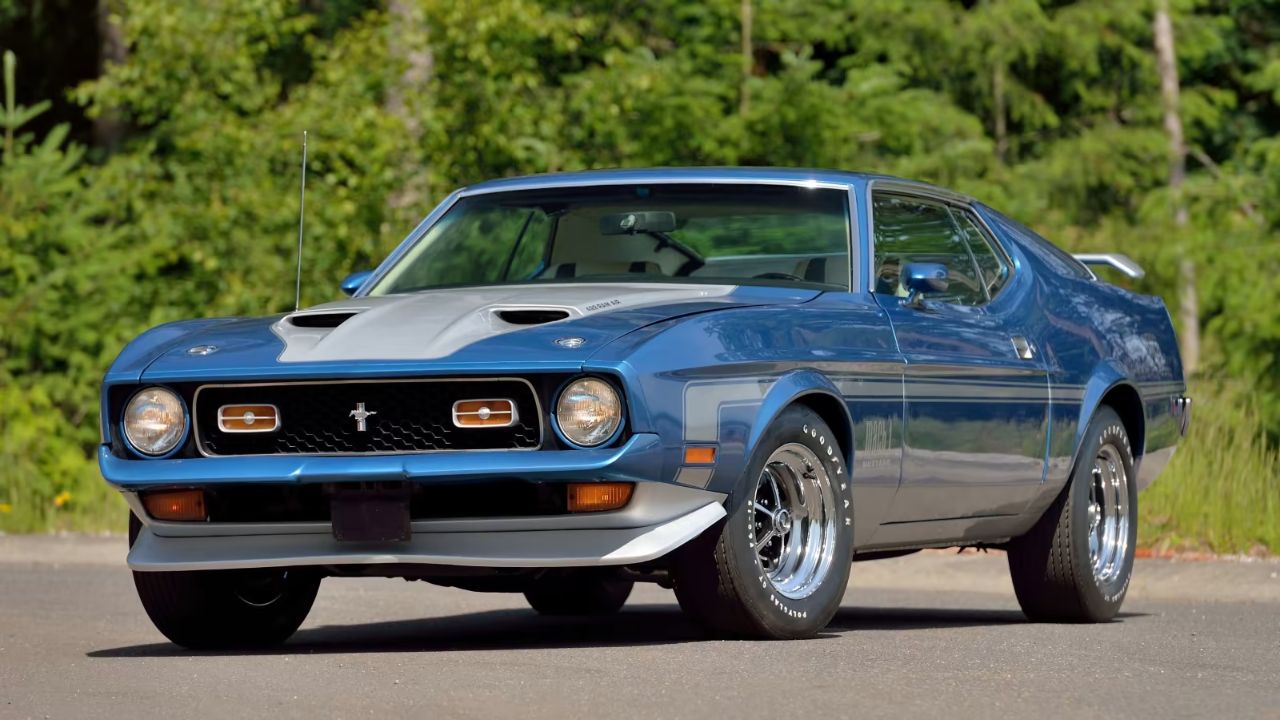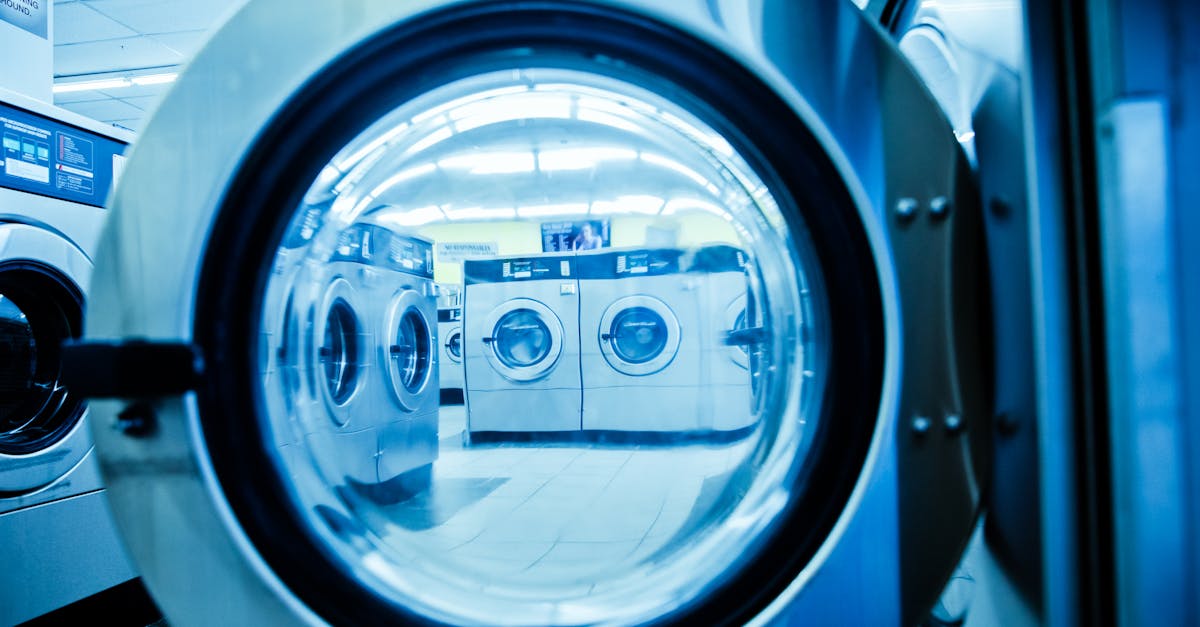While many people modify their cars for drag racing, some of the best come straight from the factory, ready to outdrag their rivals. These are production cars that the manufacturers have specially tuned to get the best out of them as they unleash their power down the 1/4 mile.
Finding the fastest drag cars is a challenge we set ourselves, and there are 13 of them on this list.
1971 Ford Mustang Mach 1 Drag Pack

The Ford Mustang, a muscle car legend, has seen remarkable iterations over the years, including the 1971 Mustang Mach 1 Drag Pack. In the early 1970s, Ford set out to conquer the sub-14 second barrier, and they came closest with the 1969 Mustang Boss 429, a testament to their engineering prowess.
This achieved 14.09 seconds down the 1/4 mile, but the ’71 Mach 1 could run 13.5 seconds down the drag strip. This is thanks to the 429 ci Super Cobra Jet V8 engine producing 425 hp and 475 lb-ft of torque, with a top speed of 125 mph. The Mach 1 also had a Hurst shifter, disc brakes, power steering, and 4.30 gears.
1962 Dodge Dart Max Wedge 413

Dodge is another manufacturer famous for its stock drag racers, and one of the most famous is the 1962 Dodge Dart Max Wedge. There is some confusion around this single-year model due to the various names, sometimes called a 440, a Max Wedge, a Ramcharger, and a “Four-Thirteen.”
Technically, all names are correct, and under the hood is a 413 ci Max Wedge V8 engine producing 420 hp and 470 lb-ft of torque. This is enough power to launch the Dart Max Wedge down the 1/4 mile in just 13.4 seconds, with a top speed of 121 mph.
2019 Chevrolet COPO Camaro

COPO Camaros are a long-standing tradition with Chevrolet that stretches back to 1969, when Chevrolet dealers used the COPO system to create special high-performance vehicles, including drag racing Camaros.
In 2019, it was 50 years since the first COPO Camaro appeared, and Chevrolet made 69 special editions of the current Camaro to mark the anniversary. All of these were for the NHRA’s Stock eliminator classes, and Chevrolet offered a Magnuson 2.65L supercharged LSX-based 350ci and two naturally aspirated versions with the 427ci and high-revving LT-based 302ci
1963 Chevrolet Impala Z11

Before creating the COPO Camaros, Chevrolet had its direct range of factory drag racers. In 1963, Chevrolet took the Impala and dropped a 427 ci V8 engine into it, creating the limited edition Z11, one of the finest drag cars of the 1960s.
Aluminum body parts ensured the new Impala was lighter than earlier drag cars, and the vast V8 engine provided 430 hp and 575 lb-ft of torque. This led to a top speed of 124 mph and a mighty 1/4-mile time of just 10.8 seconds. Chevrolet had managed to shed around 300 lbs from the Impala, and with only 57, made it one of the rarest factory drag racers in the USA.
Ford Mustang Cobra Jet

Ford has also produced extreme drag racers in the modern era, the finest of which is the contemporary iteration of the Mustang Cobra Jet. The Blue Oval shoved a giant 5.2-liter race-ready version of its Coyote V8 under the hood and added a 3.0-liter Whipple Supercharger.
This leads to around 700 hp and a top speed of around 150 mph once the 1/4 mile is conquered. Even more impressive is the claim that it can go through the 1/4 mile in just eight seconds, making it one of the fastest modern-day drag racers in the world.
Ford Mustang Super Cobra Jet 1800

It might not be for the purists, but Ford has brought its drag racers firmly into the modern era thanks to the Mustang Super Cobra Jet 1800. This is one of the most remarkable factory drag racers on the planet, and in March 2024, it smashed the 1/4-mile record with a pass time of 7.759 seconds.
As the name suggests, the electric motors in the Super Cobra Jet 1800 create up to 1,800 hp, a big jump on the previous 1,400 hp model of the drag racer. The Super Cobra Jet 1400 set the original record in 2021 with a 1/4 mile pass time of 8.128 seconds.
1964 Ford Fairlane Thunderbolt

The idea of a drag-racing Ford Fairlane sounded unusual to the average American in 1964. But Ford didn’t want to conform to this, so that year, they shoehorned the mighty 427 ci V8 engine into the 1964 Fairline. Ford also had to bolt a metal plate to the glove box with a disclaimer that the car was a drag racer and lacked some essential mod-cons.
This created a monster drag racer, with the Fairlane able to run the 1/4 mile in just 11.6 seconds with a top speed of 130 mph. The Fairlane Thunderbolt became a dominant drag racer, and it remains one of the most successful in the history of drag racing.
1969 Ford Torino Talladega

In the late 1960s and early 1970s, NASCAR revolutionized with the remarkable “aero cars.” These were the Dodge Charger Daytona and Plymouth Superbird streamliners, two of the fastest cars NASCAR had ever seen. Ford hopped onto the bandwagon with the Torino Talladega.
Under the hood was a 428 ci V8 Cobra Jet engine with 335 hp and 440 lb-ft of torque. They proved formidable on the NASCAR circuit, winning 29 races across the 1969 and 1970 seasons. Plus, they proved themselves across the 1/4 mile with a pass time of just 14.4 seconds.
1973 Pontiac Firebird Trans Am 455 Super Duty

During the 1960s, General Motors banned engines over 400 ci in mid-size cars across all its brands, including Pontiac. What made things worse was that GM also banned racing development across the entire company in 1963. In 1973, however, GM finally lifted the ban, and thus, their cars became much more powerful.
Highlighting this new freedom was the 1973 Firebird Trans Am 455 Super Duty. Power was massively increased over earlier models, with 310 hp and 395 lb-ft of torque, a top speed of 155 mph, and a 1/4-mile pass time of just 13.5 seconds.
1969 Dodge Charger Daytona

It might have been made with NASCAR in mind, but the 1969 Dodge Charger Daytona would also prove itself as a monster of the drag strip. The Charger Daytona was most powerful with the vast 426 ci Hemi V8 under the hood, producing 425 hp and 490 lb-ft of torque.
This led to a 1/4 mile time of just under 14 seconds and a top speed of around 170 mph. Famous street racer Big Willie Robinson would dominate the Los Angeles drag scene in the 1970s with a 1969 Dodge Charger Daytona. Dodge would honor Big Willie’s exploits with the King Daytona Last Call limited edition Charger.
1965 Chevrolet Chevelle Z16 SS

Ask anyone about their favorite Chevrolet Chevelle, and many will point to the 1970 Chevrolet Chevelle following the lifting of GM’s 400 ci engine ban. However, perhaps better than that was the 1965 Z16, thanks to the 396 ci Turbo Jet V8 under the hood.
Chevrolet only made 200 Z16s, all naturally aspirated and packing 375 hp and 420 lb-ft of torque. Despite no supercharging, the Chevelle Z16 SS reached a top speed of 160 mph and blasted down the 1/4 mile in just 14.1 seconds—a figure many modern cars could only dream of achieving.
1965 Dodge Coronet A990

While it is no longer a member of the Dodge range, the Coronet is still a fan favorite among enthusiasts, and nowhere was its performance more apparent than with the A990 variant. This was Dodge’s attempt to game the NHRA system, with the governing body banning lightweight materials and moving the engine closer to the vehicle’s center.
Dodge circumvented this by shortening the wheelbase to 115 inches, moving the engine closer to the center. Doge also used “chemical milling” to reduce the thickness of the steel bumpers, doors, and other parts by around 60 percent. Thanks to this and removing different components, the 500 hp 426 Hemi V8 Coronet weighed just 3,408 lbs.
1964-’66 Mercury Comet Cyclone GT

Mercury was once one of the best names in the American muscle car world, and the 1964 Cyclone GT was a fine example of its prowess. The Cyclone GT packed a monster 425 hp, 480 lb-ft of torque 427 ci V8 under the hood, allowing a top speed of 133 mph and a 1/4 mile pass time of just 12.0 seconds.
The Cyclone GT would race in the A/FX factory/experimental NHRA class, and the muscle car would become one of the most dominant in the class. They are escarceand valuable in 2024, with Mercury producing just 50 examples.




